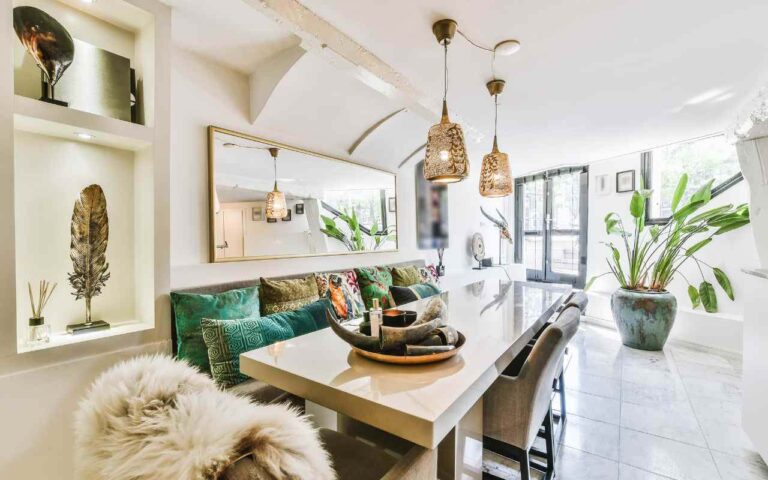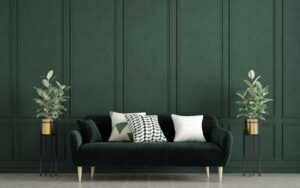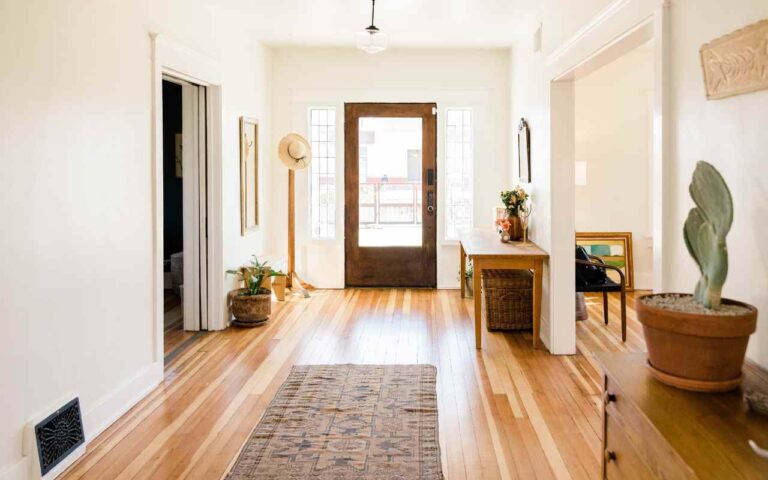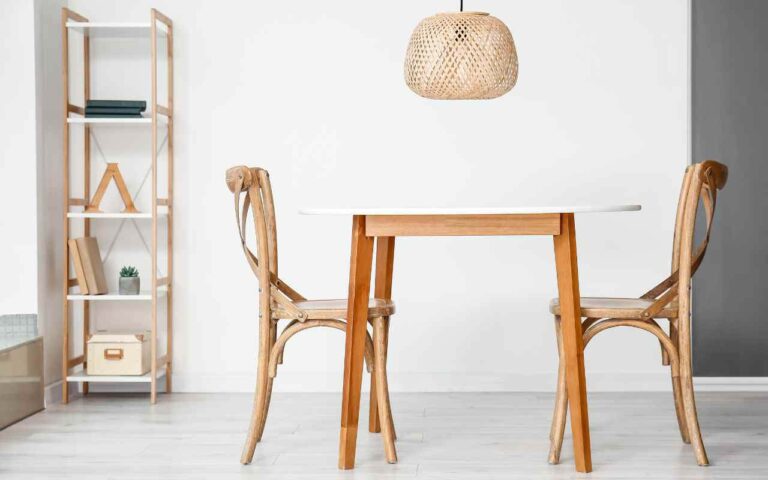Space planning, as the name suggests, involves organising the physical space in our homes. It’s not just about fitting the furniture into rooms—it’s about creating a balance between aesthetics and functionality, a concept that’s essential in any Australian home. This article by Gilmore highlights the importance of good space planning in your home and also explains how it enhances the usability and flow of space, ensuring that each room serves its purpose effectively.
Space planning has a vital role in the design and decoration of Australian homes. With increasing urbanisation, the space available in cities like Sydney, Melbourne, and Brisbane is becoming limited. But, even with these limitations, Aussies strive to make their homes spacious and comfortable. And that’s where the magic of space planning steps in—it helps maximise the available space, making homes appear larger and more inviting.
Effective space planning offers several benefits. It ensures the efficient use of space, reduces clutter, and enhances the overall aesthetic appeal. It contributes to the ease of movement within the house and promotes positive energy flow—a concept known as ‘Feng Shui.’ The room layout, furniture arrangement, and visual balance created through space planning can also have a significant impact on our mood and wellbeing. The main goal, in a nutshell, is to create a cosy, well-organised space that reflects your personal style and caters to your everyday needs.
Understanding Australian Homes
Now, let’s take a closer look at typical Australian homes. Australia’s housing style is as diverse as its people, ranging from modern apartments in bustling city centres to traditional villas in the suburbs. Realestate.com.au gives an interesting overview of the various styles you might come across.
One factor that affects space planning in Australian homes is the available space. Whether you live in a compact inner-city apartment or a sprawling suburban villa, space is always a valuable commodity. Space planning in Australian homes often revolves around overcoming these limitations and finding creative ways to utilise every square inch.
Another important aspect is the local climate. Australian homes are designed to stay cool during the scorching summers and warm during the chilly winters. This means that space planning often involves maximising natural light and ventilation—concepts we’ll delve deeper into in the next section.
Space Planning Strategies
The first step in any space planning project is decluttering. Get rid of anything you don’t need or use. This can be a tough task for some, especially if you’re attached to your possessions. However, as the saying goes, “less is more”. A clutter-free home is more comfortable, relaxing, and easier to organise.
Next, it’s time to consider furniture selection and placement. While it might be tempting to pick out the biggest, most luxurious sofa or dining table, it’s essential to think practically. Your furniture should fit your space comfortably without making it feel crowded or cluttered. That’s why many Aussies turn to Australian-made furniture, which is often designed with Australian homes and lifestyles in mind.
Storage solutions also play a key role in space planning. Good storage can make a big difference in maintaining a clutter-free, organised home. Think about using multifunctional furniture with built-in storage, or using vertical space with shelves and wall-mounted storage units. It’s all about being creative and finding a place for everything.
Lighting is another crucial aspect. It’s not just about making sure you can see what you’re doing—it’s about creating the right atmosphere. Maximising natural light can make your home feel more spacious, while well-placed artificial lights can create a cosy, welcoming ambience. Learn more about the importance of lighting design in Australian architecture.
Finally, consider zoning and creating multifunctional spaces. This is particularly important in smaller homes where you might need to make one room serve multiple purposes. For instance, a living room might also need to be a dining room or a workspace. Zoning involves designating certain areas for certain activities, which can be achieved through furniture placement, use of rugs, or even lighting.
Case Studies
To better understand the principles of space planning, let’s look at some real-life examples. Each of these Australian homes has been transformed through effective space planning, demonstrating how a well-considered layout can change the entire look and feel of a home.
Consider the case of a small inner-city apartment in Melbourne. The owners were struggling with a cramped, cluttered space, but after some effective decluttering and strategic furniture placement, they managed to create a spacious, light-filled home. They used a combination of multipurpose furniture, creative storage solutions, and carefully considered room zoning to maximise the use of their limited space. Before and after photos of the apartment illustrate the transformation.
In another example, a family in a suburban Brisbane villa faced the challenge of creating a multifunctional living space that catered to both adults and children. They managed to create distinct zones within the open-plan layout, providing separate areas for relaxation, play, and work. Carefully chosen Australian-made furniture helped to define the different zones, while the use of natural light and clever storage solutions kept the space feeling open and uncluttered. Testimonials from the homeowners highlight the difference space planning has made to their day-to-day lives.
Working with Professionals
While it’s certainly possible to tackle space planning on your own, hiring a professional space planner can be incredibly beneficial. These experts have the knowledge and skills to help you get the most out of your home, and can provide solutions that you might not have considered.
So what should you look for in a professional space planner? Experience is key—they should have a portfolio of previous projects that demonstrate their abilities. A good space planner should also be able to understand your needs and lifestyle, and should be able to communicate clearly and effectively. Of course, they should also have a solid understanding of design principles and a good eye for aesthetics.
Cost is another factor to consider when hiring a professional. Prices can vary widely, so it’s worth getting quotes from a few different professionals. However, remember that you’re investing in the functionality and comfort of your home—so it can be worth paying a bit more for a professional who will do a great job.
Future Trends in Space Planning
Space planning is constantly evolving, with new trends and technologies emerging all the time. In particular, sustainable and eco-friendly space planning is becoming increasingly important. This can involve using sustainable materials, reducing energy usage through efficient appliances and lighting, and maximising natural light and ventilation.
Technological advances are also having an impact on space planning. For example, smart home technology can help to optimise the use of space in a home, with features like built-in storage solutions and flexible living spaces. Furthermore, as more people work from home, we’re likely to see an increased focus on creating dedicated workspaces.
Changing lifestyles and needs also play a role in shaping space planning trends. For instance, as Australian cities become more crowded, there’s a growing trend towards smaller, more efficient homes. This presents new challenges and opportunities for space planning—requiring creative solutions to make the most of limited space.
Conclusion
As we’ve seen, space planning plays a critical role in creating functional, comfortable, and aesthetically pleasing homes. Whether you’re dealing with a compact city apartment or a spacious suburban villa, effective space planning can help you maximise your space and enhance your lifestyle.
So why not give it a go? Whether you decide to tackle it yourself or hire a professional, effective space planning can transform your home. And don’t forget to check out the trending home decor ideas for more inspiration.
Remember, a well-planned home is a happy home. So, take the time to plan your space—it’ll be worth it!










+ There are no comments
Add yours